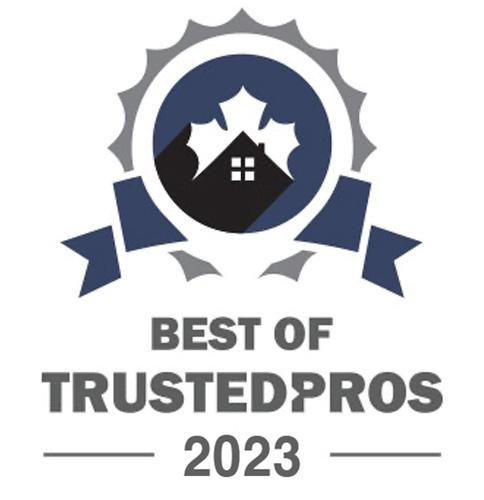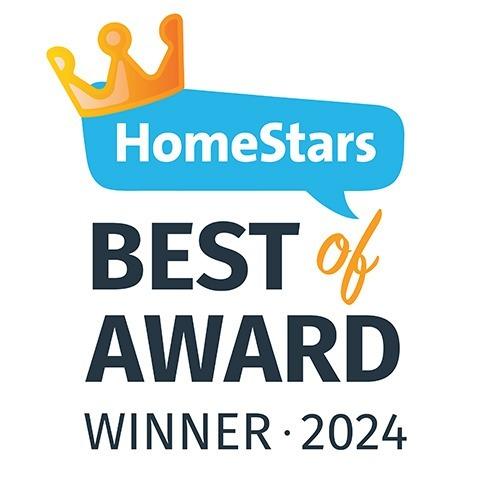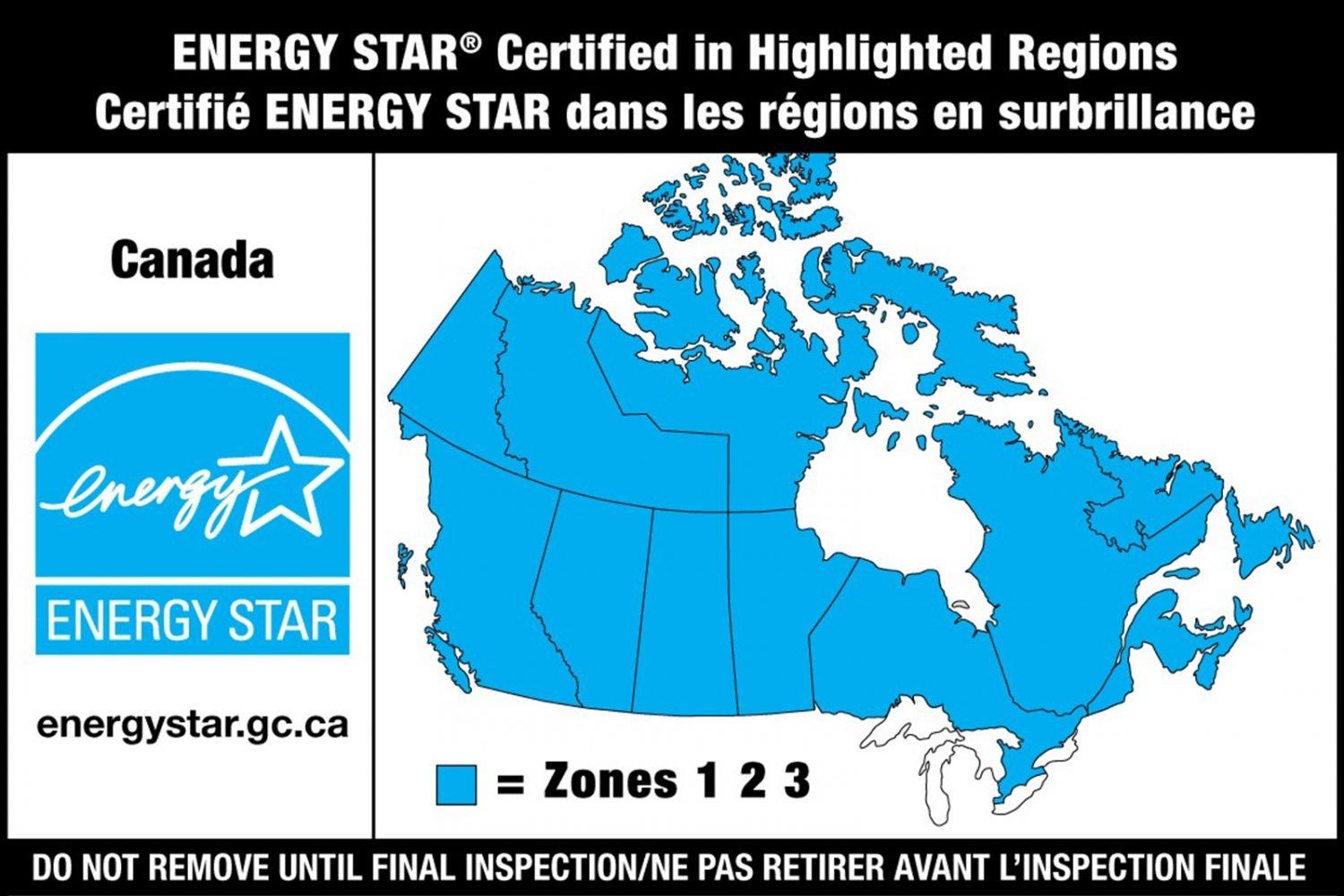2024 Guidelines for ENERGY STAR® Certified Windows, Doors and Skylights
Built
in Canada
1. Get a FREE QUOTE and we will bring SAMPLES to your home.
2. We will call you back during WORKING DAY
3. We guarantee Direct Price and Warranty from Manufacturer
If you’re like the majority of Canadian homeowners, you’ve probably heard of ENERGY STAR® as it relates to efficiency ratings for major appliances but may not be aware that there are also guidelines for windows, doors and skylights.
The 2020 Guidelines for ENERGY STAR® certified windows, doors and skylights have been released, but what do they mean for you? Ecoline Windows team has put together some specifics about the program, how to choose products that qualify as ENERGY STAR®, and what you specifically need to pay attention to when purchasing replacement windows, doors and skylights.
Why Choose ENERGY STAR®-Certified Products?
While the ENERGY STAR program was developed in 1992 as a voluntary means to reduce energy consumption without the government instituting laws to enforce it, many manufacturers have stepped up to enhance their products to meet these high-efficiency standards. Windows, doors and skylights with this designation meet quality standards for efficiencies that help reduce greenhouse gas emissions and energy use to save you money on utility bills.
Energy-efficient windows and doors can help reduce heat loss and drafts in the cold winter months and heat gain in the hot summer months. By maintaining a consistent temperature throughout the year, your home will be more comfortable.
With repeated exposure to sunlight, your furniture, draperies, photographs and even wood floors can fade or discolour. ENERGY STAR®-certified products with Low-E coatings can protect your home’s interior from damaging UV rays.
Who Regulates ENERGY STAR® Specifications?
All window, door and skylight ENERGY STAR® specifications are regulated by Natural Resources Canada (NRCan.) The United States Environmental Protection Agency (EPA) has authorized NRCan to use the ENERGY STAR name in Canada. All window and door manufacturers must sign a Fenestration Administrative Arrangement with NRCan.
All windows and doors that are designated as ENERGY STAR®-certified in Canada must display that label. Just because a product has a label on it, doesn’t mean it meets all the standards required. Look for energy ratings and compliance standards.
To qualify for ENERGY STAR certification, products must also be tested by a third-party organization that’s accredited by the Standards Council of Canada (SCC) or National Fenestration Rating Council (NFRC.)
How Do They Measure This?
These ENERGY STAR®-certified residential products sold in Canada must meet specific U-value, Energy Rating and air-tight efficiency specifications for Version 5.0 dated January 1, 2020.
- U-Factor—a formula measures the heat transfer per time per area and per degree of temperature.
- Solar heat gain coefficient (SHGC)—the ratio of solar heat gain to the incident solar radiation.
- Air leakage—the flow of air in and out of the home.
- Energy rating (ER)—a formula that balances heat loss, air leakage and potential passive solar gain.
What Are the Criteria for ENERGY STAR Certification?
The following technical specification determines how residential windows, doors, and skylights sold in Canada are certified for the ENERGY STAR® program. This specification is issued by Natural Resources Canada (NRCan). NRCan has been authorized by the U.S. Environmental Protection Agency (EPA) to promote and administer the ENERGY STAR name and symbol in Canada. A product must meet this specification in order to be promoted as ENERGY STAR certified in Canada.
Energy efficiency requirements for windows and doors are reflected in Table 1 and Table 2 below.
Table 1: U-factor Criteria for Residential Windows and Doors
| Product | Max U-factor (W/m2·K) | Max U-factor (Btu/h·ft2°F) |
|---|---|---|
| Windows and Doors | 1.22 | 0.21 |
Table 2: Alternate ER Criteria for Residential Windows and Doors
| Product | Min ER (unitless) |
|---|---|
| Windows and Doors | 34 |
Skylights products must meet or exceed the requirements in Table 3. Dynamic glazing products shall meet or exceed the criteria in Tables 2, 3, or 4 while in the minimum tinted state for chromogenic glazing products or the “fully open” position for internal shading systems.
Table 3: U-factor Criteria for Residential Windows and Doors
| Product | Max U-factor (W/m2·K) | Max U-factor (Btu/h·ft2°F) |
|---|---|---|
| Skylights | 2.29 | 0.40 |
Test and Technical Certification Requirements
All models shall be certified for their energy performance using the following standards as indicated:
CSA A440.2-14 or A440.2-19 Fenestration Energy Performance and/or ANSI/NFRC 100-14 or ANSI/NFRC 100-17 Procedure for Determining Fenestration Product U-factors and ANSI/NFRC 200-14 or ANSI/NFRC 200-17 Procedure for Determining Fenestration Product Solar Heat Gain Coefficient and Visible Transmittance at Normal Incidence
All models shall be tested to and meet the minimum requirements of the following standards:
AAMA/WDMA/CSA 101/I.S.2/A440-08 North American Fenestration Standard/Specification for windows, doors, and skylights (NAFS)-08 and its Canadian supplement CSA A440S1-09 and/or
AAMA/WDMA/CSA 101/I.S.2/A440-11 North American Fenestration Standard/Specification for windows, doors, and skylights (NAFS)-11 and its Canadian supplement CSA A440S1-17
Note: Certification to NAFS and the Canadian supplement is not a requirement.
All Insulating Glass Units shall be certified using the following standards as indicated:
ASTM E2190-10 Standard Specification for Insulating Glass Unit Performance and Evaluation and/or CAN/CGSB 12.8-17 Insulating Glass Units Standard
The model selected for testing or simulation shall be representative of that which is intended to be marketed and labelled as ENERGY STAR.
Certification for energy performance must be done by an organization accredited by the SCC for the scope of the product being certified, or, by NFRC.
Testing to NAFS and the Canadian supplement must be done by an organization accredited by the SCC or other signatories to the Asia Pacific Laboratory Accreditation Cooperation (APLAC) and/or the International Laboratory Accreditation Cooperation (ILAC) Mutual Recognition Arrangement for the scope of the product being tested.
What Energy Efficiency Features Should You Look For in Windows?
Windows, doors and skylights come in a variety of styles, shapes, sizes and performance levels. To meet the 2020 ENERGY STAR® specifications, you should look for these energy-efficient features:
Double and Triple Pane—the space between panes of glass is what give windows and doors the best thermal insulating power. The larger the gap, the better the insulation.
Low-E Coating—low emissive coatings help reduce energy gain (heat infiltration) and block damaging UV rays from penetrating your home.
Argon and Krypton Gas—used to fill the gap between triple-pane windows. Conducts up to 50-percent less heat than air and protects against heat loss and condensation in cold climates.
ENERGY STAR® Climate Zones—Canada is broken down into three climate zones based on average annual temperature. Zone 1 is warmer and Zone 3 is the coldest. Look for windows and doors that are rated for your particular Climate Zone to achieve the greatest energy efficiency. Many windows, doors and skylights are rated for more than one zone. Be sure to choose products rated for your zone or colder for the best insulating value.
Are There Window and Door Rebates and Incentives Available?
To encourage Canadians to buy energy-efficient windows, doors and skylights, Natural Resources Canada offers consumer education programs and cost incentives for the purchase of ENERGY STAR®-certified products.
Rebates and incentives vary by province and municipality, but you may be able to save significant dollars on the purchase and installation of windows and doors. In some cases, you may also qualify for bonus savings by doing two or more energy-efficient upgrades.
Related articles:
British Columbia Energy Efficiency Rebate Program
What Can You Expect?
As technology changes and design changes are made, you can expect even more energy-saving window, door and skylight products to become available. With them will come changes to ENERGY STAR® standards to encourage even more research—for reducing energy consumption, greenhouse gas emissions and saving the planet.
Before you begin your home improvement project and purchase replacement windows, doors and skylights, be sure to speak with your contractor/window supplier to make sure they all comply with ENERGY STAR standards. You’ll save money, make your home more comfortable, and increase your home’s future resale value as well.
Ecoline Windows offers ENERGY STAR®-certified windows and doors that meet all energy efficiency requirements. Send us an online request today to discuss your window replacement project.





